They both have a sturdy base, a strong pole, a colorful, shady canopy - what’s the big deal? If I use my beach umbrella as a patio umbrella (or vice versa), what’s the worst that could happen? The truth is, your patio umbrella should stay close to home with its hefty construction, making a trip to the beach a hassle. However, you actually can use a beach umbrella out on the patio after a bit of DIY. But don’t stop reading! I’ll lay out the step-by-step for converting your beach umbrella later, but first, it is extremely important to know the differences between the two shady features before making your decision. After all, this umbrella is going to be the protective layer between you and the sun’s rays no matter where it is placed.
Patio and beach umbrellas are both designed for their specific uses, with patio umbrellas made to stand strong in one place against the elements and beach umbrellas constructed for easy portability and anchoring in the sand. Here are some more differences and benefits of each to choose the best umbrella for your needs.
What Are the Benefits of a Patio Umbrella?
Material Varieties
Patio umbrellas are meant to be outside all the time: during excessive sun exposure, harsh wind storms, heavy rains, and all other weather conditions. Because of this, the fabric has to be strong enough to withstand the elements and still look stunning when on display and in use.
Most patio umbrellas are made from either polyester fabric or treated acrylic to ensure weather-resistance, waterproof qualities, and elegant performance over long periods of time. These umbrellas are a long-lasting investment! Polyester is a soft fabric that is naturally sun-resistant to stay colorful year after year. It is easy to clean and a gorgeous all-weather material for a patio umbrella. Acrylic fibers are dyed before being made into stringed fabric, ensuring the color stays consistent for years. Acrylic is durable, stronger than the typical outdoor fabric, and sure to last.
Adjustability Throughout the Day
The finest feature of most patio umbrellas is the ability to adjust the tilt to ensure blockage from direct sun when at any angle in the sky. This feature is convenient to shade your eyes and protect yourself from the sun all day long. An adjustable pole to make the umbrella taller or shorter when needed is also a great feature to ensure proper protection and cool shade in the heat.
Bases and Anchorage
While their materials are meant to withstand weather, the wind can often create issues if a patio umbrella is not anchored down. Most patio umbrellas require some sort of base or anchor to keep them from flying away. Different kinds of anchors and bases include sand or water plates, cast iron designed bases, resin bases, concrete anchors, and even half-round patio bases if you need to save some space in your outdoor area. Because of the necessary added anchor, patio umbrellas operate best when stayed put.
Frame Construction
The frame of your patio umbrella is equally important in making sure this feature stays strong and durable. Many umbrellas feature powder-coated steel or aluminum ribs on the inside of the umbrella fabric and throughout the pole’s construction. Powder-coated steel and aluminum both ensure rust resistance and beauty. These materials are strong, and often heavy, for a steady, weather-resistant, long-lasting, and grounded patio umbrella.
Style
Patio umbrellas are typically made with softer designs in comparison to beach umbrellas, because they don’t need to be easily spotted on a crowded beach and are made to match any existing outdoor aesthetic or style. Many patio umbrellas feature natural shades, deeper tones, or solid colors for a light, elegant feature easily applicable to any patio area. Keep this in mind when thinking of converting your beach umbrella to your patio!
What Are the Benefits of a Beach Umbrella?
Material Varieties
Beach umbrellas are made to be out in the sun and stand tall in sandy conditions. Their main purpose is to protect you from the sun in the most sun-exposed place possible! Because of this, beach umbrellas are typically made out of polyester material that is UV treated to keep harmful UV rays outside of your shady area. Polyester is strong, durable, won’t fade with excessive sun exposure, and will keep you away from too much sun! This long-lasting investment will make beach trips fun and safe.
Accessibility At All Times
The finest feature of a beach umbrella is the ability to be transported with ease for every impromptu beach trip. While patio umbrellas are made to stay in one spot, beach umbrellas are made to be ready to go at any moment. Easily set up, take down, transport, and store beach umbrellas when needed because of its lightweight, foldable, and durable design. The framed material and polyester fabric are lightweight to make grabbing this umbrella on the go easy.
Bases and Anchorage
Unlike patio umbrellas, beach umbrellas don’t require an additional base, plate, or anchor to stay in place. The beach umbrella is built to be the very thing that stays in place in the sand! Most beach umbrellas are made with a stake pole ending for secure fastening in the sand, or feature a corkscrew bottom for added support. Made with strong materials, beach umbrellas are made to stand against any beachy condition.
Frame Construction
Beach umbrellas are durable and sturdy but are not for everyday use. Instead, they’re strong enough to make sure they’re resistant to water, rust, sand, and sun exposure, as well as strong enough not to break and potentially hurt anyone. Because of this, beach umbrellas usually feature a powder-coated steel construction for long-lasting strength and beauty. Beach umbrellas are also typically made of aluminum, plastic, and fiberglass so they remain lightweight for easy portability.
Style
Designed to make sure you never lose sight of your umbrella amongst a crowded beach, beach umbrellas are bright, often featuring a fun design, and are colorful for added liveliness. Beach umbrellas come in a variety of color combinations and patterns unlike patio umbrellas. Their brightness is sure to liven up any area and easily be spotted.
What is the Right Umbrella for Me?
There are plenty of advantages to both patio umbrellas and beach umbrellas: beach umbrellas are becoming more and more versatile as upgraded designs are more useful year after year. Beach umbrellas often feature adjustable poles and tilt adjustments, scalloped or hanging edges on the sides for added style and extra shade coverage, and more diverse color patterns for style. Still, your patio umbrella is built for all weather conditions, is styled for most patio aesthetics, and will provide shade for your furniture all day when the canopy is up.
If you’ve decided to ditch your patio umbrella, here’s how to make the most out of your beach umbrella.
How to Convert a Beach Umbrella into a Patio Umbrella
Step 1: Grab Your Materials
For this quick DIY experiment, you’ll need:
- A beach umbrella
- A PVC pipe
- A planter (preferably one that is made of concrete or other heavy material for stability)
- Dry concrete
- Water
- Various pebbles, rocks, or soil
Step 2: Prep Your Pipe
Place your PVC pipe in the middle of your planter, making sure that it is standing upright and completely straight. Grab someone for a helpful hand if needed.
Step 3: Cement It in Place
Once your pipe is placed where you want it to be, carefully prep and pour the dry concrete inside the planter and fill it up about halfway. Spread the concrete around the pipe evenly, and add water when necessary to let it sink in. If it is bubbling, know that that is normal. Hold the pipe in place to ensure it stays level.
Step 4: Let It Dry
Hang on to the pipe until the concrete has a solid foundation. Then, watch it carefully so that during the drying process the pipe doesn’t move out of place. This will take up to four hours. In areas where the air is very humid, leave your mixture outside overnight to ensure that it is completely dry.
Step 5: Test the Fit
When your mixture is completely dry and your PCV pipe is stable, test out your beach umbrella fit by placing it in the pipe. If you prefer, place the umbrella in the pipe through a table with an area for an umbrella fixture.
Step 6: Accessorize!
Complete your base with accessories by filling the rest of the planter full of soil, rocks, or pebbles. Add a natural element to your patio and create any aesthetic you want to fit your outdoor space.
No matter which umbrella you choose, make sure to invest in one of them - protecting you and your furniture from UV rays and harsh weather is essential to ensure longevity and safety. Plus, umbrellas are an easy solution to keep you cool during heat waves. Both patio umbrellas and beach umbrellas are great options: take in the benefits of both and then decide which one best fits your needs.

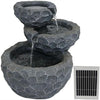
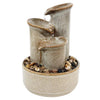

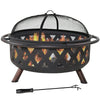
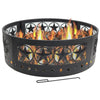


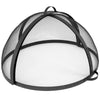
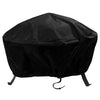
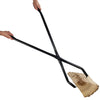
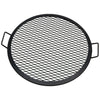
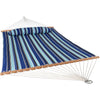
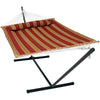


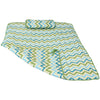
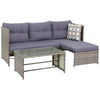
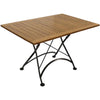
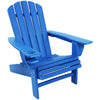
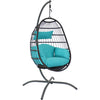

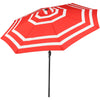
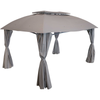



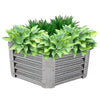
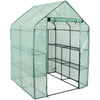

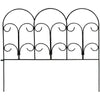
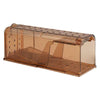
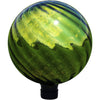



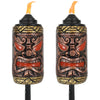


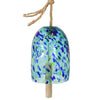


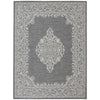

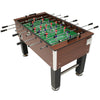
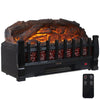
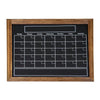





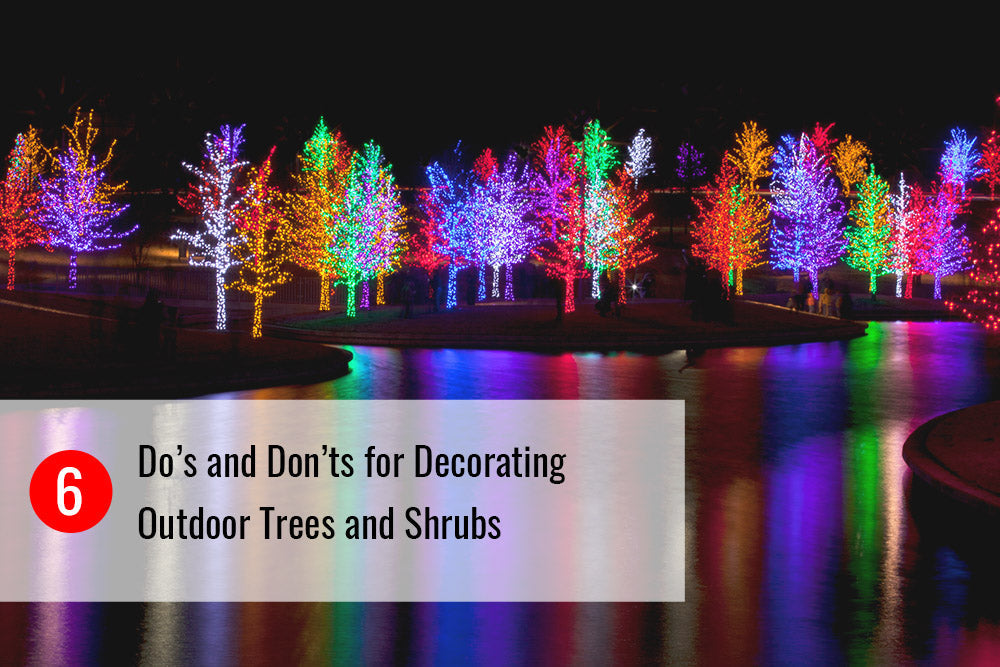















4 comments
Taylor
We just got a beach umbrella from walmart to replace our old heavy crank umbrella. All I had to do was rotozip the screw base off for sand. It slips right into our umbrella stand and is more colorful for by our pool. Has a velcro strap for when not in use.
Solbello
I love the idea of converting a beach umbrella into a patio umbrella. It’s a great way to save money and get a new umbrella. I’m definitely going to try this out.
Sharon
its a shame they dont have a umbrella stand that a sand umbrella could fit into…as we like to take to the beach and works great, but we would also like to have it on our patio on a hot windless day and be able to move the umbrella with easy.. or to shade my plants on a super hot day.. thanks
Sarah
Hi there
We have large and fairly flat rocks down by the waterfront at our harbour side home. I’d like to be able to move my fairly portable patio parasol down there like the Italian riviera hotels have in places like Capri. Do you have any advice how to do this to create a hole and removable sleeve to pop the umbrella in and out if when desired please? Wind is no issue at all.